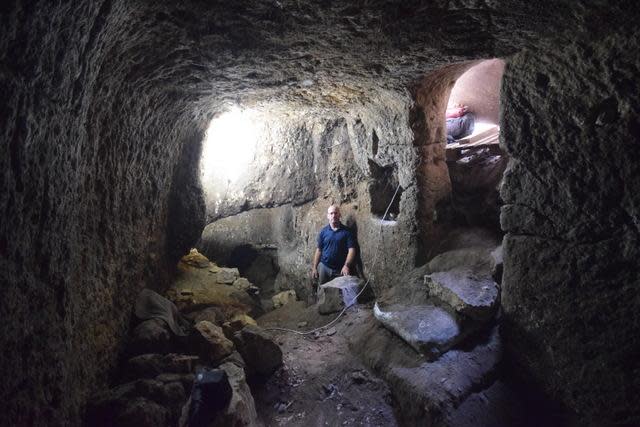Israel: Biblical Roman Stables Discovered Near Galilee
A family digging in their garden in the Israeli village of Eilabun have unwittingly uncovered a complex of underground stables, hewn into the soft rock in Roman times 2,000 years ago.
The entrance to the stables, which had remained hidden some 9 feet below the ground, would previously have been at surface level. However, years of accumulated silt and dirt slowly covered the entrance of the system of caves, concealing them from view for centuries.
Related: Mystery of lost biblical “Sea People” revealed in ancient hieroglyphs uncovered In Turkey
Archaeologists, led by Nir Distelfeld, told Haaretz that the man-made caves would also have been used for storage, given some of the remnants found there. But the strongest indicators that the carved rooms were used to house livestock are illustrated by holes chiseled into the cave walls.
The animals would have been tied to the carved holes that formed a handle, with a stone trough laid below them for food and water.

Experts, once they were alerted to the discovery of the site, were able to discern the period the caves were in use by analyzing pottery shards left strewn across the ground. They dated the site to the first century A.D., around the time Jesus is believed to have lived in the area.
Eilabun is the site of an ancient Jewish village and currently a recognized Israeli Arab local council in Galilee. It lies some 11 miles from Nazareth, where the New Testament claims the Christian messiah grew up. The Christian faith also holds that it was in Galilee, in modern-day northern Israel, that Jesus began his ministry.
The caves would have been in use in the time of the Second Temple, which the Romans destroyed along with the rest of Jerusalem in 70 A.D. Important local families from the town at the time would have spent two weeks each year serving at the temple.
Excavators have also uncovered a local synagogue in the small rural village that today remains much the same size as it did thousands of years ago.
Unfortunately the opportunity for further discovery in the caves has been lost because of robbery and pilfering at the site. Israel’s archaeology inspectors have said the stables were thoroughly pillaged before they arrived, with vandals gouging out certain sections of the rock in the hopes of finding more artifacts.
“The looters weren’t archaeology experts,” Distelfeld said. “When they saw a chamber, they started to deepen it, breaking the rock itself, thinking they would find other interesting stuff.”
What has been recovered from the rooms—one central chamber with a series of smaller rooms branching off—includes pieces of Roman-era ceramic storage jars and flour-grinding apparatus dug into the rock. Two arrests have been made in connection with the thefts.
“The thieves may have found other things, but they won’t tell us,” Distelfeld added.
Related Articles


